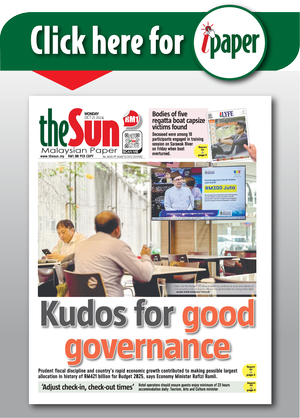PETALING JAYA: What may seem like economic progress through the rise of dual-income households actually reflects a deeper crisis of stagnant wages in Malaysia, an analyst warned.
Commenting on the “middle-income squeeze”, Emir Research founder Datuk Dr Rais Hussin said the growing reliance on two earners per household is a coping mechanism, not a sign of prosperity.
“Overwork props up consumption, but it papers over the real problem – an economy not producing enough high-productivity, well-paid jobs,” he told theSun.
He said while nominal wages have risen, real purchasing power has failed to keep pace with the cost of living, forcing families to depend on multiple income sources just to sustain their standard of living.
“The turn to dual incomes and side jobs may boost household earnings in the short term, but it’s not a sustainable solution. Wage stagnation means two earners are now required to achieve what one income once sufficed,” he said.
Rais explained that if productivity and wages had kept pace since the early 2000s, a single median household income today would plausibly sit between RM9,100 and RM9,500, compared with the current RM6,900 to RM7,200.
“That shortfall of more than RM2,000 is what a second earner now covers.”
He said absolute inequality has widened sharply, creating a growing gap between what households earn and what they need to maintain a middle-class lifestyle.
“Pay cheques may be larger than in the past, yet the lifestyle distance between average and above-average families keeps ballooning,” he said, adding that household debt remains among the highest in Asia, hovering around 84% of GDP, with mortgages, car loans and personal credit consuming much of middle-income earnings.
Meanwhile, the median formal-sector wage of RM3,000 in early 2025 represents only a modest nominal gain once inflation is factored in, particularly for urban families struggling with housing, childcare and transport costs, said Rais.
He added that housing affordability has deteriorated sharply. With the median house price estimated between RM280,000 and RM330,000 and median household income between RM5,500 and RM7,000, the house price-to-income ratio stands at about five times the annual income – far above the global affordability benchmark of three.
“That shows how middle-income families are increasingly priced out of home ownership without taking on heavy debt.”
He also highlighted that financial resilience has weakened, with only 58% of Malaysians saying they try to save – down from 67% three years ago – and many middle-income households having less than one month of savings.
“The reality is that a large share of the middle class is one shock away from financial distress.”
Rais warned that the growing dependence on dual incomes reflects deeper labour market weaknesses and imposes greater strain on families.
“Parents must cope with less time together, heavier childcare responsibilities and rising stress levels. Overwork may keep families afloat in the present, but it masks the deeper problem of an economy that is not generating enough quality jobs with adequate pay.”
He stressed that Malaysia must focus on productivity-driven wage growth rather than normalising multiple jobs.
“The remedy is not normalising two jobs. It is raising productivity and ensuring that gains are passed through into wages.”
Rais said near-term measures could include targeted tax relief for M40 households, broader B2B (business to business) Sales and Service Tax (SST) exemptions to prevent cost layering and stronger support for healthcare and childcare.
In the long term, Malaysia must revamp its incentive framework and adopt a carbon-aligned industrial strategy to attract high-value investment and raise median wages.
“Only then will families no longer need to rely on a second earner or multiple jobs just to sustain their standard of living.”









